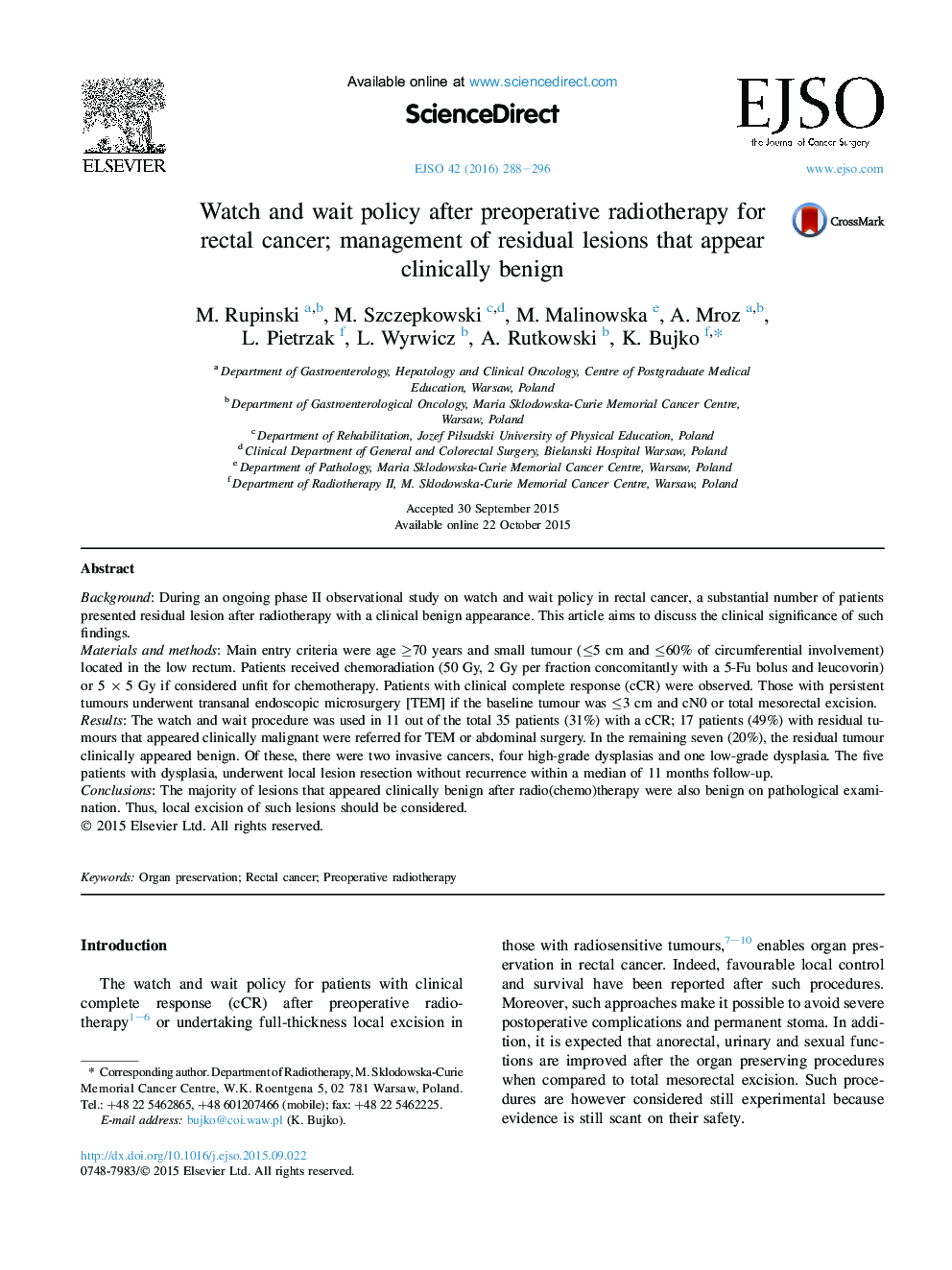| Article ID | Journal | Published Year | Pages | File Type |
|---|---|---|---|---|
| 6191563 | European Journal of Surgical Oncology (EJSO) | 2016 | 9 Pages |
BackgroundDuring an ongoing phase II observational study on watch and wait policy in rectal cancer, a substantial number of patients presented residual lesion after radiotherapy with a clinical benign appearance. This article aims to discuss the clinical significance of such findings.Materials and methodsMain entry criteria were age â¥70 years and small tumour (â¤5 cm and â¤60% of circumferential involvement) located in the low rectum. Patients received chemoradiation (50 Gy, 2 Gy per fraction concomitantly with a 5-Fu bolus and leucovorin) or 5 Ã 5 Gy if considered unfit for chemotherapy. Patients with clinical complete response (cCR) were observed. Those with persistent tumours underwent transanal endoscopic microsurgery [TEM] if the baseline tumour was â¤3 cm and cN0 or total mesorectal excision.ResultsThe watch and wait procedure was used in 11 out of the total 35 patients (31%) with a cCR; 17 patients (49%) with residual tumours that appeared clinically malignant were referred for TEM or abdominal surgery. In the remaining seven (20%), the residual tumour clinically appeared benign. Of these, there were two invasive cancers, four high-grade dysplasias and one low-grade dysplasia. The five patients with dysplasia, underwent local lesion resection without recurrence within a median of 11 months follow-up.ConclusionsThe majority of lesions that appeared clinically benign after radio(chemo)therapy were also benign on pathological examination. Thus, local excision of such lesions should be considered.
